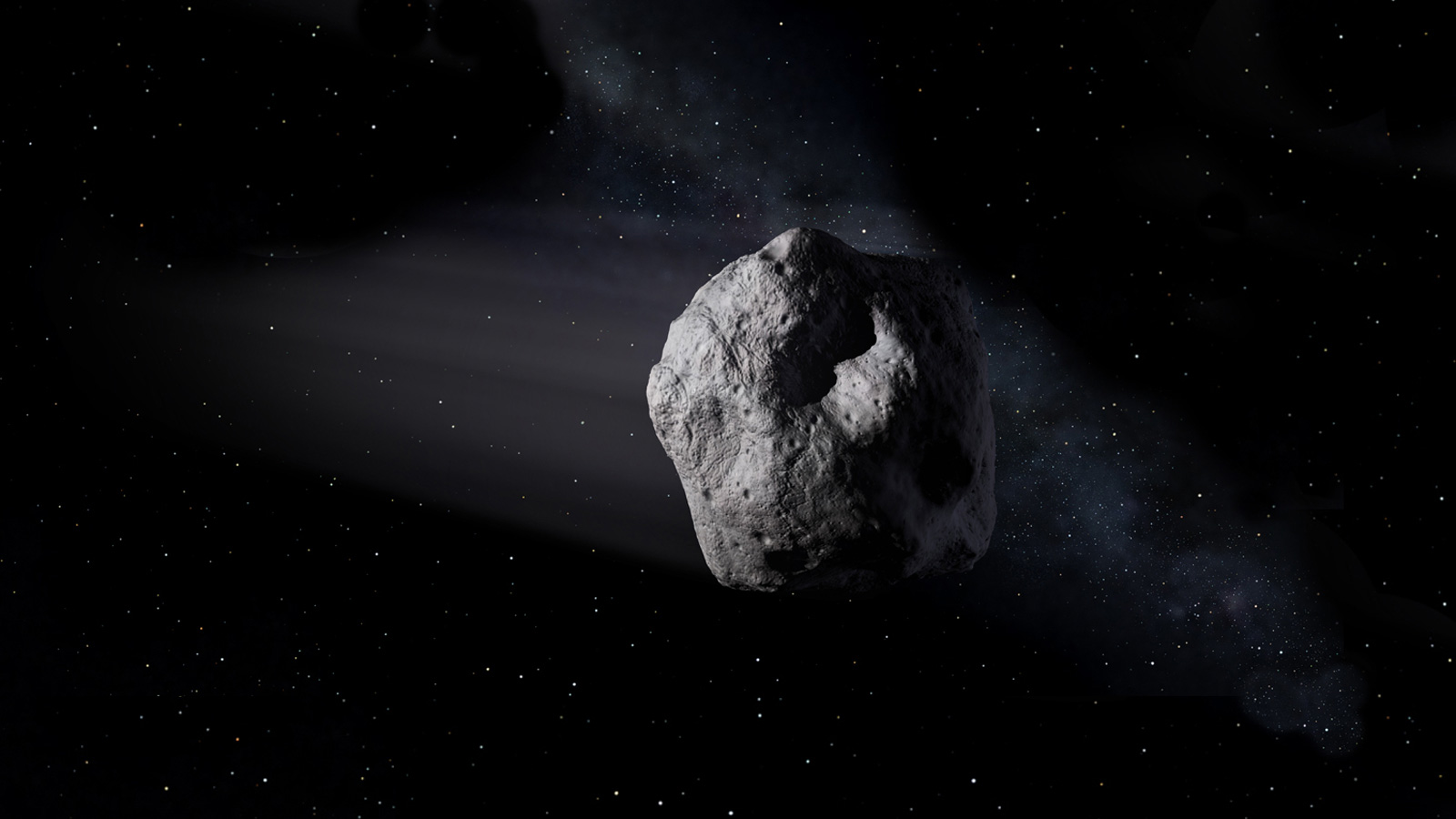Asteroids threatening Earth could be spotted by network of spacecraft near Venus' orbit, Chinese scientists say
Spacecraft could provide an early warning system for the vast majority of dangerous asteroids.

We may have a new way to spot potentially hazardous asteroids.
Researchers have proposed a novel system of six surveyor spacecraft deployed in Venus-like orbits to serve as an early warning system for space rocks that threaten Earth.
There are more than 2,000 potentially hazardous near-Earth asteroids in the Minor Planet Center database. According to NASA's Center for Near Earth Object Studies, asteroids that are larger than about 500 feet (140 meters) in diameter and that come within about 4.65 million miles (7.48 million kilometers) of Earth are considered potentially hazardous.
Related: The greatest asteroid missions of all time!
To monitor and assess these potential threats, a team led by Li Xiangyu of the School of Aerospace Engineering at the Beijing Institute of Technology (BIT), along with collaborators from BIT and the China Academy of Space Technology, has proposed launching a constellation of satellites close to Venus in planetary defense efforts.
The proposed CROWN mission would employ a surveillance constellation of six heterogeneous wide-field near-Earth surveyors and a parent spacecraft to detect, track and provide an early warning system for potentially hazardous asteroids.
After releasing the surveyors equipped with optical telescopes, the parent spacecraft would be positioned at a gravitationally stable sun-Venus Lagrange point orbit to facilitate relay communication.
Get the Space.com Newsletter
Breaking space news, the latest updates on rocket launches, skywatching events and more!
The researchers found that Venus-like orbits provided better coverage over the space inside Earth's orbit than a surveyor at sun-Earth Lagrange point 1, a gravitationally stable point about 932,000 miles (1.5 million km) inside the Earth's orbit, and were energetically easier to achieve than Mercury-like orbits, meaning the launch costs would be lower.
The results presented in the paper, published in the journal Space: Science & Technology in August, found that the constellation could provide effective early warnings for almost all potentially hazardous asteroids, with only four of the 2,072 known dangerous space rocks remaining invisible during a five-year mission.
The China National Space Administration announced this year that it is developing a planetary defense system. China also plans to launch an asteroid deflection mission similar to NASA's DART mission around 2026 and develop capabilities to track and detect near-Earth asteroids.
It is unclear if CROWN is being considered for funding as part of China's efforts. The authors did not respond to a request for comment.
Follow us on Twitter @Spacedotcom and on Facebook.
Join our Space Forums to keep talking space on the latest missions, night sky and more! And if you have a news tip, correction or comment, let us know at: community@space.com.

Andrew is a freelance space journalist with a focus on reporting on China's rapidly growing space sector. He began writing for Space.com in 2019 and writes for SpaceNews, IEEE Spectrum, National Geographic, Sky & Telescope, New Scientist and others. Andrew first caught the space bug when, as a youngster, he saw Voyager images of other worlds in our solar system for the first time. Away from space, Andrew enjoys trail running in the forests of Finland. You can follow him on Twitter @AJ_FI.









